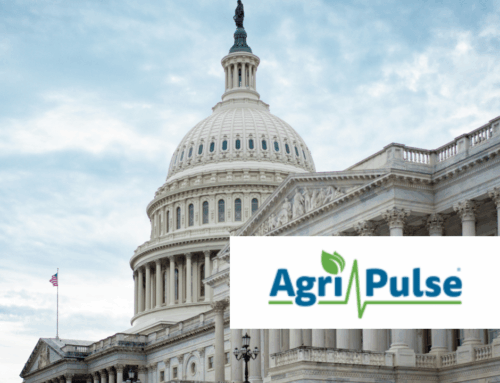View/Download this article in PDF format.
Our nation’s current fiscal situation is causing every federal program to come under public scrutiny. Agricultural conservation programs – including both working lands and land set aside programs – are no different. With the need to rein in our $17 trillion debt, the farm safety net must be reformed to make it more cost-effective, accountable, transparent, and responsive to taxpayers. Various reforms to farm bill conservation programs would ensure that taxpayer spending is targeted toward projects with the greatest measurable outcomes and the best return on investment. While some program consolidations and streamlining was achieved in the 2014 farm bill, additional reforms would help reduce downstream and future costs of impacts of agricultural production. Making the best use of taxpayer dollars will also require better and more consistent monitoring of water and soil quality indicators, data analysis, and the implementation of best management practices on farms across the country.
Background
Since the inception of farm bill conservation programs and farm subsidy accountability standards in 1985, much progress has been made to reduce wetlands losses and soil erosion. For instance, from 1997 to 2007, the U.S. Department of Agriculture (USDA) reports that the country gained 250,000 acres of wetlands; so-called “Swampbuster” provisions – which deny federal farm subsidies to producers who drain wetlands – in particular helped protect between 1.5 million and 3.3. million acres of vulnerable wetlands between 1982 and 1997. In addition, soil erosion on cropland dropped 43 percent from 1982 to 2003, from 3.0 to 1.75 billion tons per year. However, some ground has been lost over the past five years as agricultural producers reaped short-term gains at the expense of long-term agricultural productivity; producers planted record numbers of corn and soybean acres, due to the availability of federal agricultural subsidies, ethanol and biodiesel mandates, and high crop prices. More must be done to ensure that not only farm bill conservation dollars achieve the best return on investment, but also that farm subsidy programs such as federal crop insurance do not spur risky planting decisions at taxpayer expense.
USDA Reporting of Conservation Progress Falls Short
To ensure taxpayer dollars are spent on projects with the best return on investment, better monitoring and data analysis must be incorporated into farm bill conservation programs. Currently, most USDA reporting of outcomes is faith-based or reliant on outdated models. However, to demonstrate to the public that measurable results are being achieved, more specific, timely, and better data monitoring and analysis is necessary. Initiatives such as reporting the impact of conservation funding on fertilizer and pesticide runoff in the Mississippi River Basin can serve as a model to be implemented in other parts of the country.
As an example of how current USDA reporting of measurable impacts falls short, see the following critiques of the department’s Conservation Effects Assessment Project (CEAP) reports. According to USDA, “CEAP is a multi-agency effort to quantify the environmental effects of conservation practices and programs and develop the science base for managing the agricultural landscape for environmental quality. Project findings will be used to guide USDA conservation policy and program development and help conservationists, farmers and ranchers make more informed conservation decisions.” CEAP rightfully strives to move beyond individual conservation program reporting which simply states the number of producers and acres enrolled, and instead attempts to directly tie environmental practices with measurable outcomes. However, much more can be done to demonstrate measurable public benefits of conservation programs. CEAP reports have been published on the Upper and Lower Mississippi River (UMRB and LMRB), Missouri River, and several other important basins.
CEAP Critiques
- Reports fall short when estimating the actual impact of conservation practices on water quality because analysts rely on data from farmer surveys and national agricultural practice reports instead of also utilizing measurable results from edge-of-field monitoring stations.
- Reports rely on outdated data gathered between 2003 and 2006. Since crop prices rose significantly, less crop rotations were utilized, and more land went under the plow after 2006, the report may overestimate positive impacts of conservation practices.
- Some progress on better soil and wetlands conservation may also have been cancelled out by other environmental changes because some cause and effect relationships were not taken into account. For instance, USDA acknowledges that the installation of increased tile drainage (which hastens the flow of water away from wet areas of farmland and into nearby waterways), “in combination with ineffective or incomplete nutrient management practices, results in sufficient amounts of additional nitrogen being leached from the soil… [and] produces a small net increase in total nitrogen loss.” Hence, improvements on one producer’s field may be cancelled out if his or her neighbor alters water flows without regard to the effect on downstream water users.
- Analysts may fail to adequately model real-world conditions. As an example, CEAP reports estimate the effect of conservation practices by taking the difference between the 2003-06 scenario and an alternative scenario which assumes landowners use no conservation practices whatsoever. Again, USDA may overestimate the positive water and soil quality effects since some farmers will implement conservation practices to improve their bottom line, regardless of whether or not they receive federal dollars to do so. It is unrealistic to assume that zero farmers implement measures to reduce soil erosion and farm runoff and then use this as a baseline from which to calculate changes.
- Benefits may also be underestimated by assuming grassed buffers, conservation tillage, and other practices were installed or implemented properly. Without on-the-ground monitoring or satellite imagery proving that practices are actually producing measurable outcomes, analysts have no way of assuring these practices result in real public benefits.
EQIP Critiques
To provide an example of how one of the largest agricultural conservation working lands programs – the Environmental Quality Incentives Program (EQIP) – could achieve better taxpayer return on investment by implementing better measures and metrics, see the following program critiques:
- Competitive bidding is no longer allowed in EQIP even though the program historically achieved greater return on investment when this practice was allowed. A World Resources Institute study found that competitive bidding resulted in a seven-fold increase in public benefits, such as better soil and water quality, as compared to traditional EQIP funding methods which disregard which farmers can implement the greatest benefits at least cost.
- Program performance measures, even if they are proven at local levels, are not allowed to be incorporated into future national or state EQIP funding decisions.
- According to the Government Accountability Office (GAO), the USDA Natural Resource Conservation Service’s (NRCS) “process for providing EQIP funds to states is not clearly linked to the program’s purpose of optimizing environmental benefits; as such, NRCS may not be directing funds to states with the most significant environmental concerns arising from agricultural production…NRCS does not have a specific, documented rationale for (1) why it included each factor in the formula, (2) how it assigns and adjusts the weight for each factor, and (3) how each factor contributes to accomplishing the program’s purpose of optimizing environmental benefits…Moreover, outdated and duplicate formula data sources may further compromise EQIP’s effectiveness in allocating funds.” A recent GAO report also suggested that 17 percent of EQIP-funded conservation practices from 2005 and 2010 “could facilitate agricultural runoff or have other unintended consequences unless mitigating measures were implemented along with them,” signaling the need for significant improvement.
Recommendations
These lessons learned provide evidence that performance measurement in conservation programs, in addition to better cost-effectiveness, transparency, and accountability, can be greatly improved. The following recommendations should be included in any future reforms of farm bill conservation programs to ensure taxpayer dollars are put toward their best use:
Cost-effectiveness
- Eliminate perverse subsidies that work at cross-purposes with conservation programs such as those in the highly subsidized federal crop insurance program. Similarly, counterproductive practices with potential to cancel out each other’s benefits should be minimized (for instance, by installing measures to reduce fertilizer and pesticide runoff when tile drainage is used to move water away from farmland).
- Allow competitive bidding to achieve the greatest benefits at least cost.
- Target funding to areas of greatest need, such as farmland near the most polluted bodies of water. As GAO has previously recommended, NRCS should ensure “that its rationale for [ranking projects] is documented and linked to program priorities, its data sources are accurate and current, and it uses information about long-term program performance to ensure funds are directed to areas of the highest priority.”
- Inform future funding choices with results from on-the-ground monitoring systems instead of simply relying on farmer surveys or outdated government statistics that make inaccurate assumptions about farmers’ behaviors. Due to budget constraints and labor requirements, some economic modeling will no doubt be used in conservation program performance reports, but this should reflect recent, real-world, and measurable data. Changes in conservation indicators should be compared to an appropriate and accurate baseline to ensure taxpayer dollars are providing the best return on investment.
- To reduce overall program costs, allow producers flexibility about how to achieve reductions in agricultural runoff and improvements in water quality.
- Only additional conservation practices should be paid for. A 2010 USDA Cost-Effectiveness Analysis revealed that at least 60 percent of so-called “conservation performance points” funded via some conservation contracts were for existing, not additional, practices. In other words, millions of taxpayer dollars were used to fund practices that would have been implemented with agribusinesses’ own dollars and without taxpayer support.
Transparency
- Information about conservation program funding should be publicly available to discern whether taxpayer dollars are directed toward the most cost-effective projects.
Accountability
- Program goals, indicators of success, and means of measurement must be established to ensure taxpayer dollars are achieving the greatest public benefits. Indicators should be: “(1) relevant: the indicator reveals something that you want to know about the system; (2) precise: you can reliably trust the information that the indicator provides; (3) sensitive: as the system changes, the indicator changes in a predictable fashion; (4) easy to understand: the indicator is intuitive to laypersons and decision-makers; and (5) measurable: the indicator is based on accessible data that are already available or can be collected and interpreted with reasonable effort.” Effective monitoring and evaluation should follow these measurement steps.
- In exchange for any farm subsidies (including crop insurance premium subsidies), producers must be accountable to taxpayers by implementing time-tested best management practices such as using minimal tillage and wetlands and grassland conservation. While the 2014 farm bill included conservation accountability measures in both commodity subsidy and crop insurance programs, better implementation and field monitoring can help determine whether these steps are achieving public benefits such as better water quality and wildlife habitat.
- Tie payments to performance – not just practices. Most USDA conservation programs currently report the number of acres and producers enrolled but fail to tie payments to actual on-the-ground impacts on fertilizer runoff, water quality, etc.
- Sufficient field visits and management controls must be implemented to ensure that future USDA Office of Inspector General reports do not continue to find that NRCS failed to implement these basic administrative controls or dispensed funds “to participants who did not qualify for the program.”
For more information, visit www.taxpayer.net, or contact Joshua Sewell, josh at taxpayer.net.










